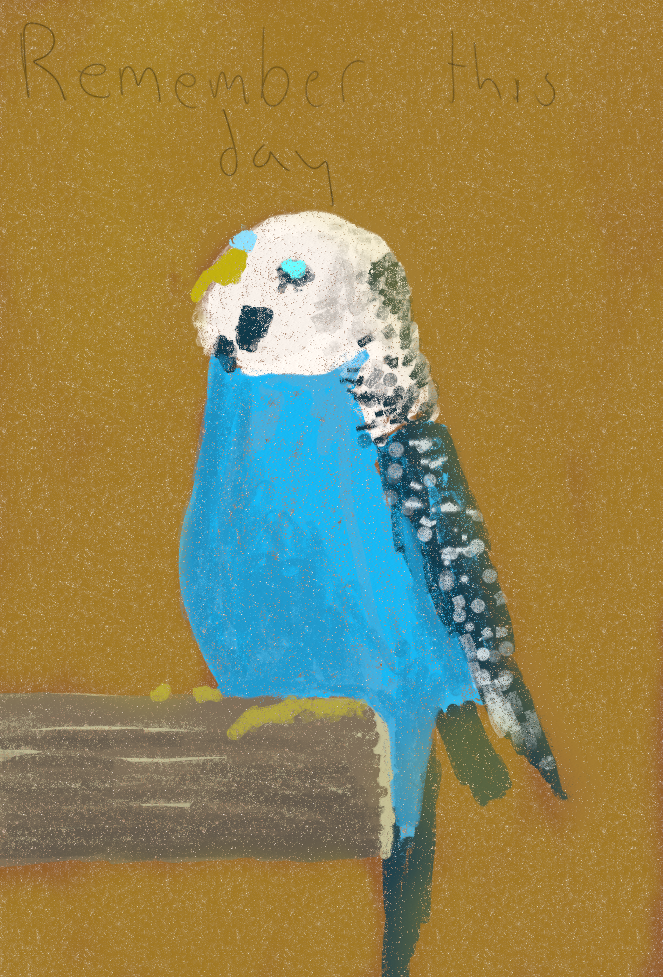

It started as a fake psychiatry scam, but when Hubbard realized there were laws regulating medicine he switched it over to being a religion where there aren’t any of those pesky regulations or ethical oversight.
Proud anti-fascist & bird-person


It started as a fake psychiatry scam, but when Hubbard realized there were laws regulating medicine he switched it over to being a religion where there aren’t any of those pesky regulations or ethical oversight.


I love you.


Pound by Mr. Mime.


As long as we’re wishing, I’m going with bigpox.


It’s really annoying how people confuse cynics with skeptics.
There is nothing “skeptical” about flat-out denying the efficacy or safety of vaccines; there is abundant evidence of both. Refusing to accept plain facts because your livelyhood depends on it is just plain cynical.


Isn’t sinking what submarines are built for?


Satan 2: This time, it’s personal.


I wholeheartedly agree!
One of the things out group does is play for dancers at reenactment events. The dance steps were recorded for a lot of the Renaissance period pieces, and it’s pretty incredible to be able to coordinate the tunes for the same dances from hundreds of years ago.
It really changes the atmosphere of an event to have music around; it’s a living connection to history.


Here is a video of a professional Renaissance recorder consort in lower voicings (the lowest I believe being contrabass) that shows how great they are. They do get a bad reputation because it’s easy to make them squeak really badly as a beginner (and especially as a young person with no musical training). They really are a great introductory instrument into early music though; you can get a plastic tenor for about $40 and it’ll be the same one professionals practice on regularly.
I got started in early music on modern guitar with a book of tabs, and it was a great way in. I later met up with a local group who pointed me towards some great resources, and I loved it so much that I wanted to go deeper by learning to play an actual period instrument. I did some research and talked to a bunch of people for advice on what to buy and finally picked one up and took some lessons at the beginning of the year. It’s a lot harder to get into than guitar, but it’s also incredibly rewarding.


I play early music as an amateur, and I’ve seen a few fun older instruments around.
I’m currently learning the renaissance lute, a bowl-backed six to 8 course precursor (sort of) to the modern guitar. It has a large period repertoire that can be played pretty accurately due to the surviving tablature and plentiful treatises on technique and style. It is a plucked instrument, they really weren’t strummed much like a modern guitar.
The older variant, the medieval lute, was primarily a strummed instrument; the musician would usually hold a quill or similar tool as a plectrum. The notation at the time was not as complete as what we are used to (and there are also far fewer sources on how to read it), but there is some very good scholarship in the field that gives us a pretty decent guess on how the repertoire sounded.
The recorder went through a kind of revival in the early 20th century, as it was a fairly easy folk instrument to mass produce while also being beginner friendly (since you don’t really need to develop your embrasure to make a passable sound). The modern variety is known as the baroque recorder, and has a standardized fingering with a more mellow sound than it’s earlier counterparts. Incidentally, flutes are likely some of the oldest instruments that humanity produced, with the oldest known example being a cave bear bone flute probably made by a Neanderthal.


BZ Basel also said Thomas was arrested the day after Ms Joksimovic’s body was found, and initially told investigators he had found her dead and dismembered her body in their laundry room in panic.
Let those who have not dismembered a family member in a panic with a jigsaw and garden shears before dissolving their pulped body in a bath of acid throw the first stone.


Sign my guestbook!


Maybe worth looking into alpha-gal syndrome?


Wait, wait, wait.
You’re telling me there are other countries?


He’s bonafide!
Exactly.
Everyone knows you drink it.


Tacitus refers to Christians, which doesn’t necessarily mean that Jesus existed if he was an amalgamation of various apocalyptic prophets; there were many mystery cults at the time who had a legendary founder.
I think the chances are pretty good that he did exist, but it’s not a foregone conclusion.


Dunno if I’d call the guy who says he’s a literal god the most humble dude in history.
Of course it’s questionable if he did indeed make that claim (if he even really existed), but the Pope certainly believes that he did.


Incredible find!
I didn’t see in the article an explanation of how the bones fossilized. It seems like a terrible spot for that to occur, but I don’t really know much about the process. I assume the animal was buried in sediment at some point?
Kim Stanley Robinson’s Mars series.
Just a breathtaking setting that begins with the first hundred settlers and traces the intrigue, terraforming, conflicts, and dreams of the colonists. It’s a sweeping epic written on a human scale.